ESS-FOOD is a global supplier of different food products within the Danish Crown family. With 21 offices in 18 countries and annual sales of over 366.000 tonnes, ESS-FOOD is among the leading suppliers of products to food manufacturers, retailers, caterers and distributors throughout the world. Our headquarter is placed in the center of Copenhagen and we employ about 149 people around the world.
Our range of chilled and frozen meat products is virtually endless. We offer a countless number of product combinations based on pork, beef, poultry, lamb and seafood.
Cuts, recipes, packaging and other important elements can be customized to meet our customer’s specific requirements.
We see ourselves as much more than a supplier of different food products. Our goal is always to establish a value-adding partnership with our customers as well as our suppliers around the world. We are known for our thorough knowledge of local markets and thus we are able to meet local needs and demands, providing customers and suppliers with the highest level of service and competitive prices.
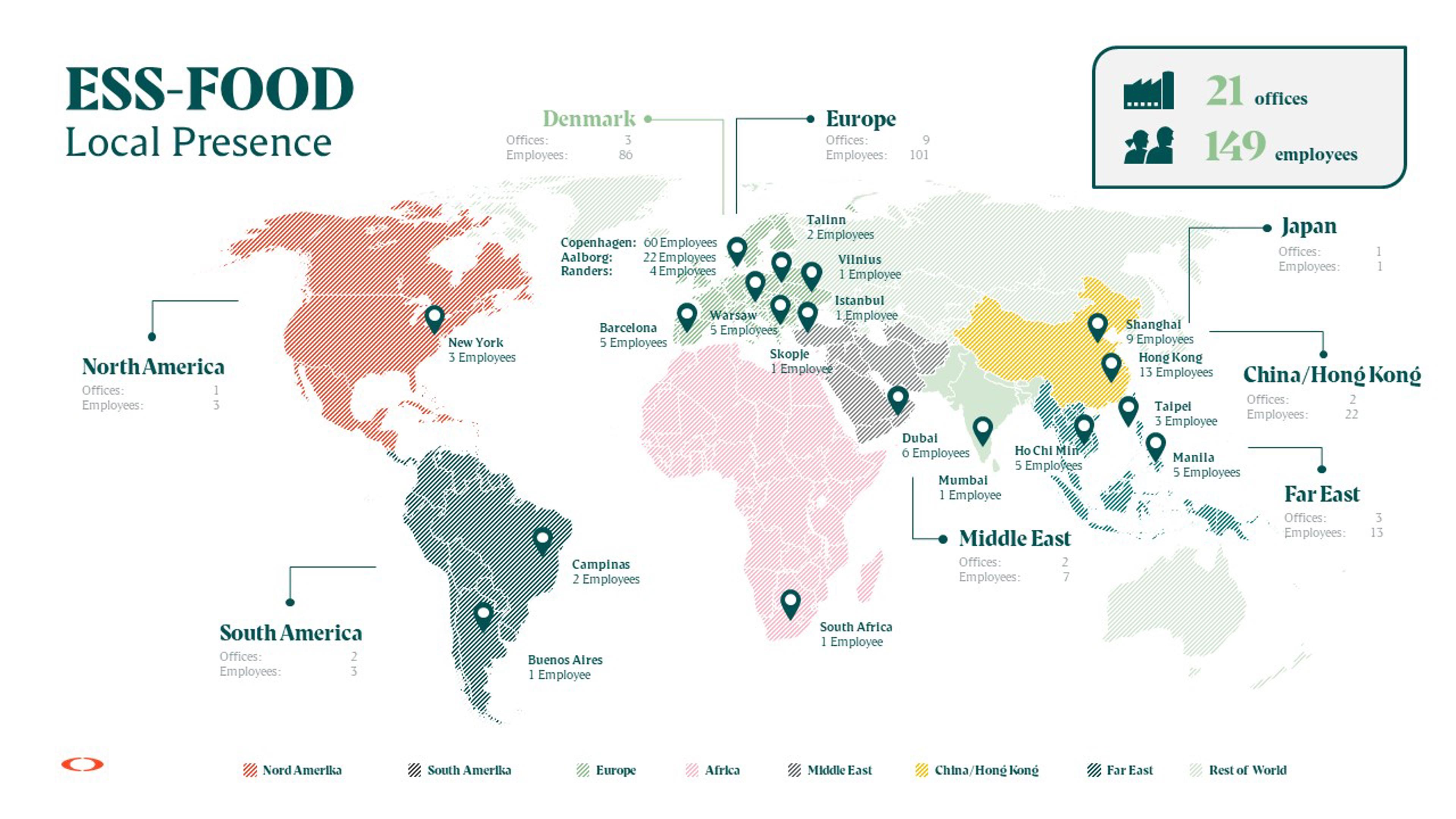
Our History
ESS-FOOD's origins and evolution dates back to 1890, when the concept of a shared sales office for cooperative pig slaughterhouses was first proposed.
Seven years later, this idea became a success as 'De Samvirkende Danske Andelssvineslagterier', now known as 'Danske Slagterier' (DS = Danish Slaugtherhouses).
The cooperative aimed to establish a strong organisation capable of engaging in industry discussions at the highest governmental levels, while also standardising quotation, classification, and feeding system.

In 1950, the name ESS-FOOD was introduced, becoming the commercial arm of Danish Slaughterhouses, officially known as 'Eksport Svineslagteriernes Salgsforening' (Export Slaugtherhouses Sales Company).
Exporting Danish Products - During the 1950s and 1960s, ESS-FOOD managed the majority of bacon exports to the United Kingdom (UK), at one point handling 33% of all Danish pig exports. In 1967, ESS-FOOD and DFDS launched the 'Container Transport-System', revolutionising bacon transportation:
- Bacon sides were transported unpacked in cooling containers directly from slaughterhouses to British buyers, without unloading at shipping or receiver ports.

- Sea transport utilised specially build container ships with advanced loading and unloading methods on a roll-on/roll-off basis.

This collaboration led to significant investments by DFDS, which began constructing these specialised container ships. Esbjerg and Grimsby were chosen as the loading ports.

Two years prior to the 'Container-Transport-System', ESS-FOOD established the 'Bacon Container Central' in Esbjerg's port, laying the foundation for the entire container transport system.

From the Bacon Central, ESS-FOOD managed all transportation planning form Denmark, maintenance, materials used, and packing of bacon sides in containers. It started with 400 containers and 30 prime movers, including some stationed in Grimsby (UK).
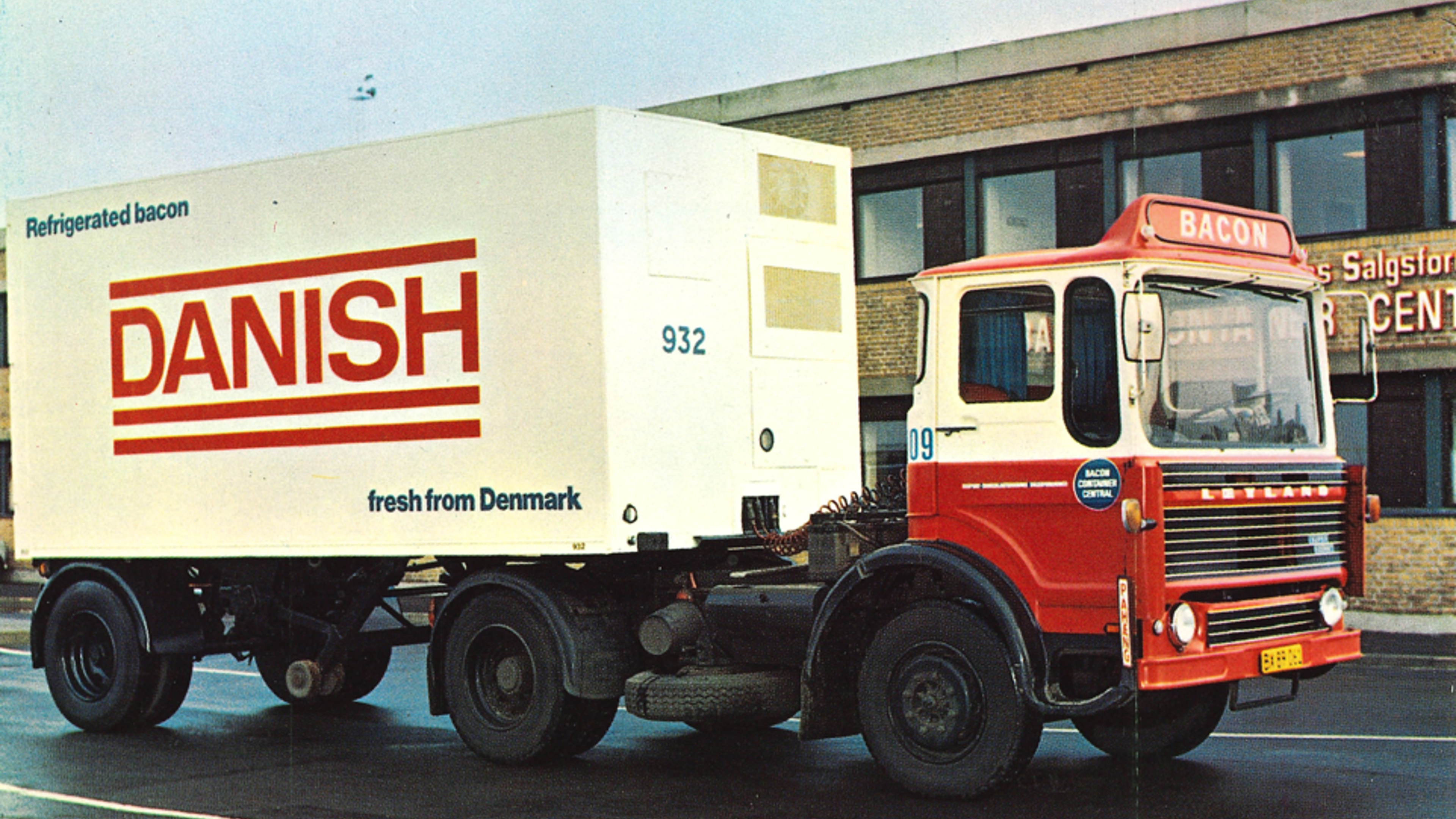
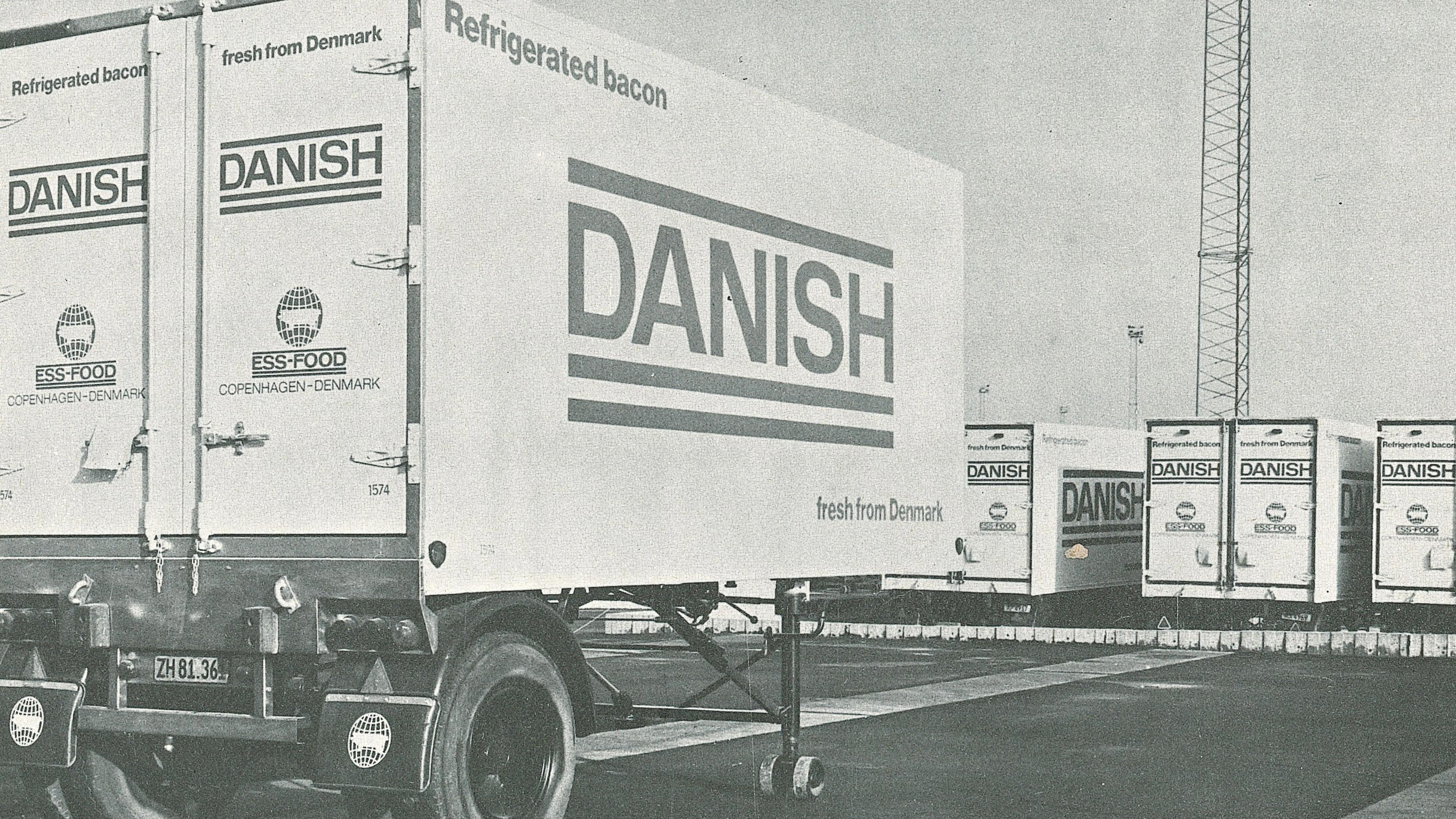
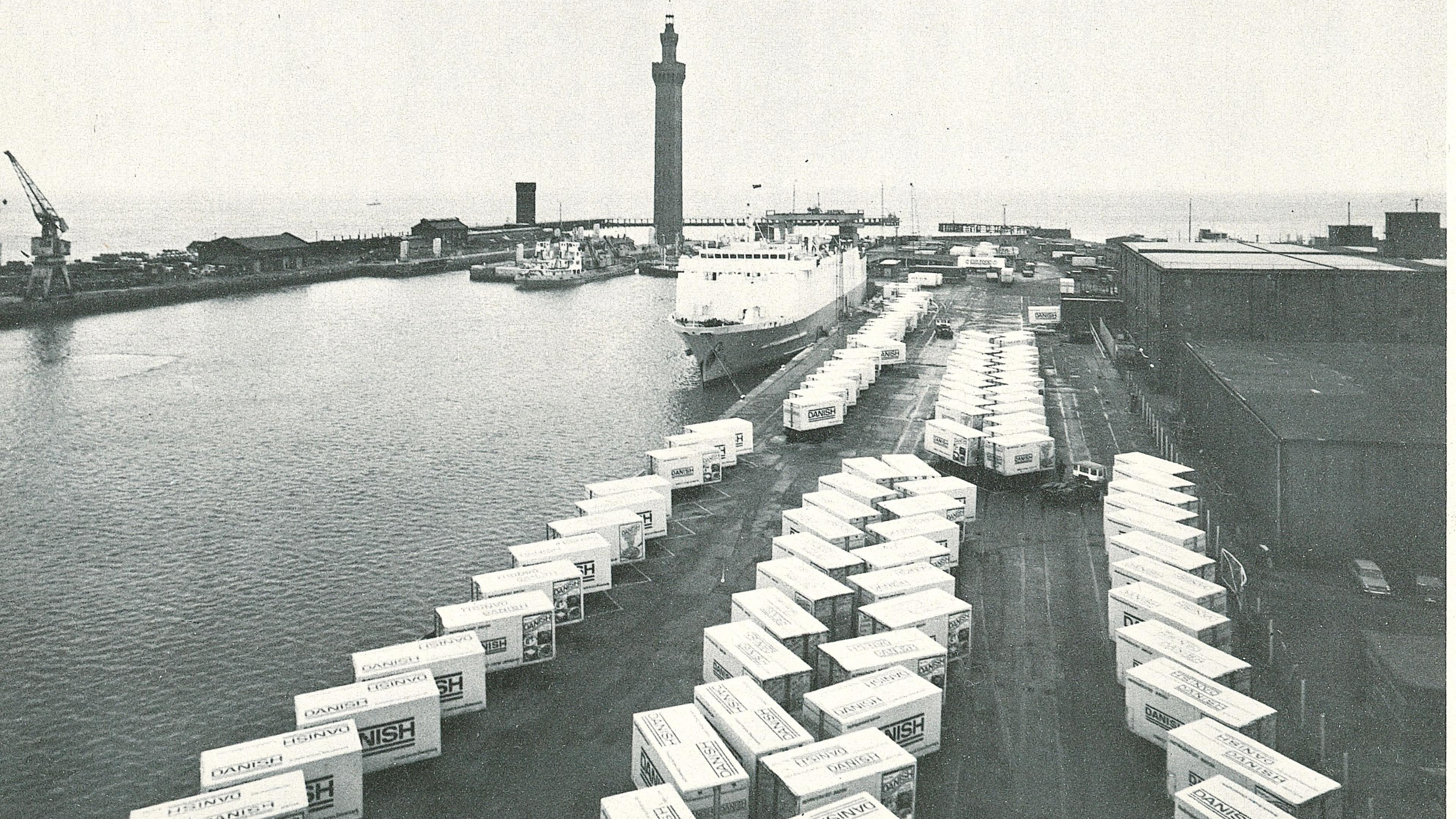
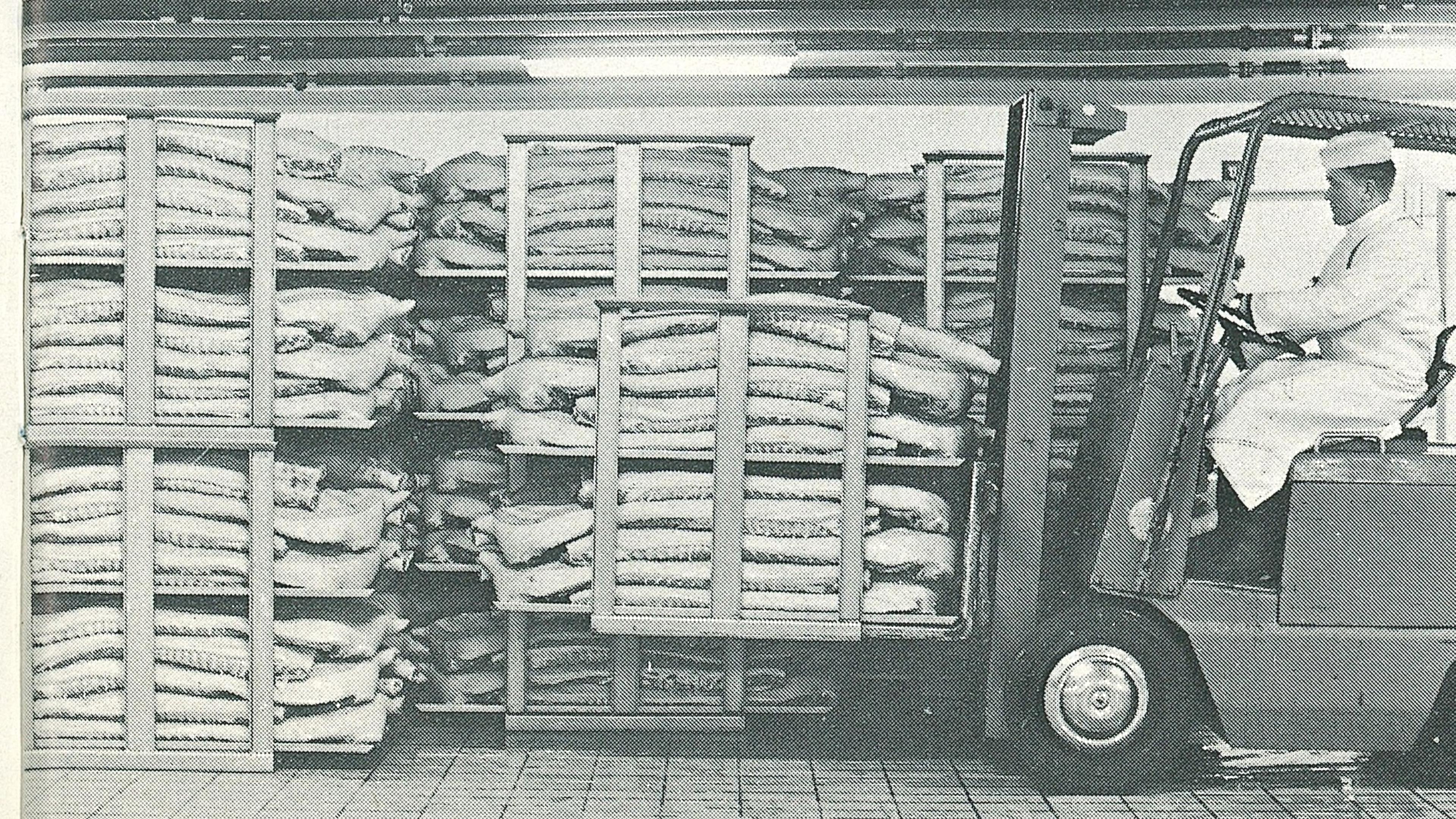
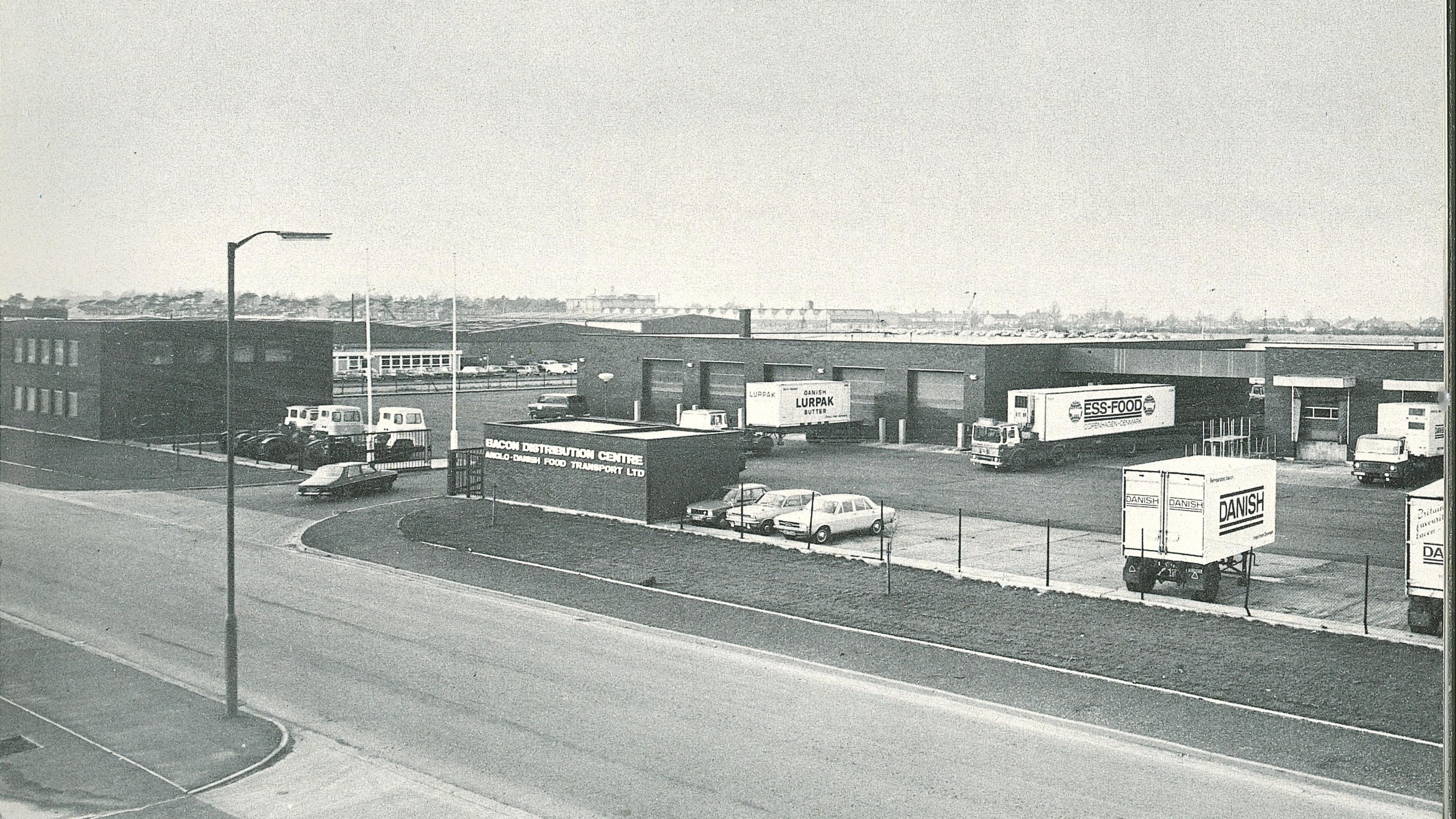
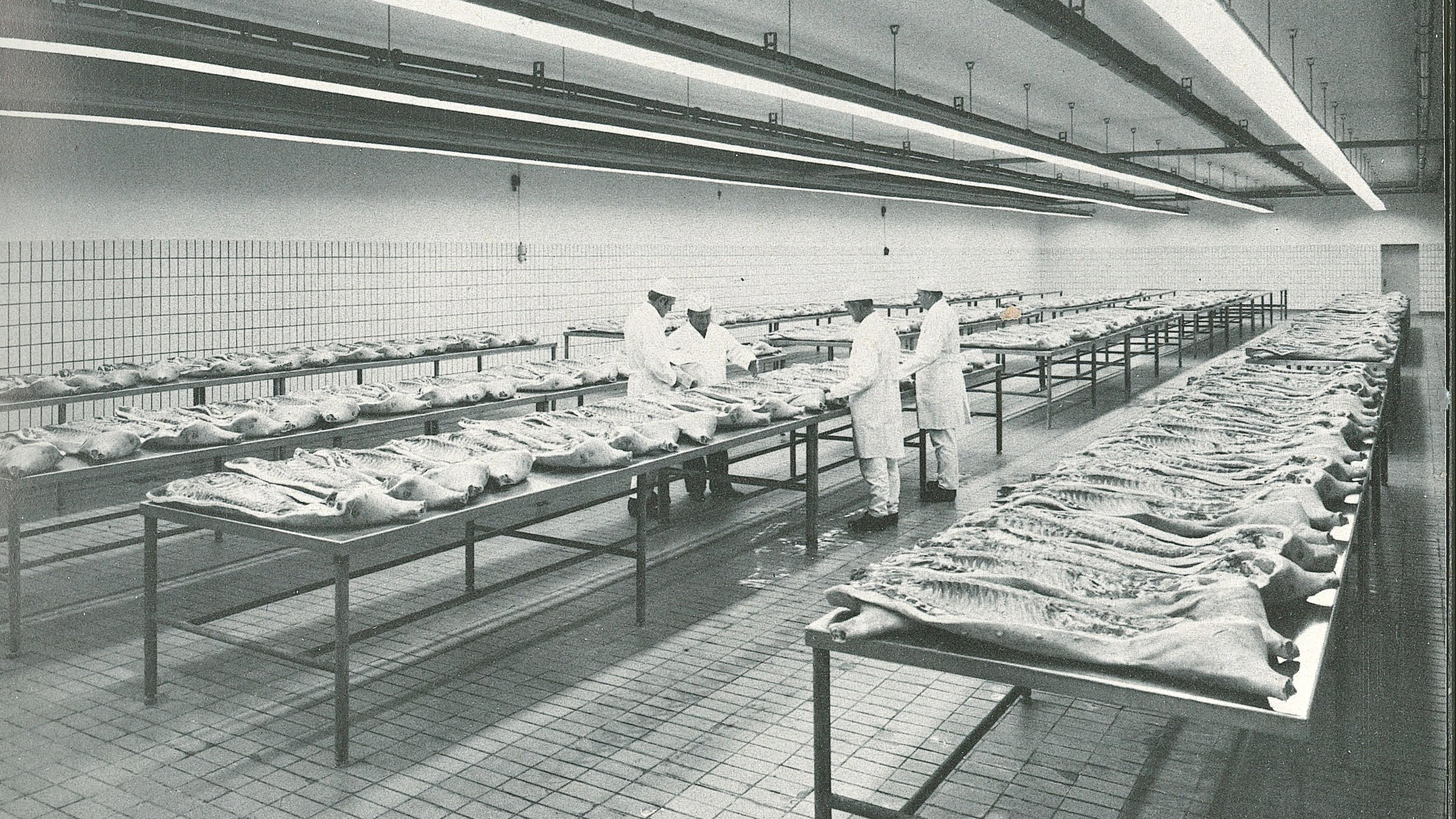
The journey forward - The cooperative of the Danish slaughterhouses didn't last forever and bit by bit, many decided to leave the 'Fælleskontor' where ESS-FOOD managed the Danish export. The turning point for ESS-FOOD and the cooperative occurred in 1984, when it was decided that ESS-FOOD should no longer hold and maintain the UK export, aswell as other markets that had been developed i.e. Japan. Instead, slaughterhouses such as Tulip began exporting themselves leaving ESS-FOOD in a situation where owners and collaborating slaughterhouses could now sell and export without going through ESS-FOOD.
This meant new rules were agreed, defining the trading house ESS-FOOD is today;
- Danish slaughterhouses were no longer required to fulfil and deliver products to ESS-FOOD's requirements on product specifications and cuts,
- ESS-FOOD was no longer required to exclusively sell Danish slaughterhouse products,
This major turning point, also meant that ESS-FOOD, moving forward could sell products no matter the origin and the company could buy and sell from and to anyone.
The content could not be shown due to the current cookie settings
To access the blocked content please change your cookie-settings.
The content needs acceptance of the following cookies:
- Statistic
- Funktional
- Marketing
The ESS-FOOD we know today - ESS-FOOD had already before 1984 established offices in various countries. These were not to be considered distributions offices, but instead began purchasing products locally for export, which kicked off the trading of ESS-FOOD as we know today.
During the mid-90's, Danish Crown had merged various slaughterhouses under one common name and owned the majority of ESS-FOOD. At this time, many of the Danish Crown slaughterhouses maintained their own export and many international offices had been changed from ESS-FOOD to Danish Crown name, whereby the existence of ESS-FOOD was questioned.
A decision to split ESS-FOOD in early 2000's, meant that the name 'ESS-FOOD' was put in the drawer and became DAT-Schaub International, DAT-Schaub A.m.b.a. and Emborg Foods (Emborg Foods was later sold).
In 2007, the name and mergers had created confusion amongst customers, since DAT-Schaub A.m.b.a. was a well-known casing company and the function of DAT-Schaub International was trading.
The same year, a decision to revive the ESS-FOOD A/S name was taken.

ESS-FOOD strategy - 2022
As a starting point, ESS-FOOD has grown strong positions in key markets with solid reputation and supplier base. The complications are seen as new consumer trends & growth opportunities, and how to re-focus our strategic priorities.
The ESS-FOOD strategy is driven by a combination of regional organic and new growth initiatives and global/local enablers.

employees in our company
tonnage in 2024/2025
revenue (1000 DKK) in 2024/2025
